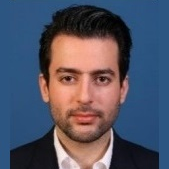New Technologies and Materials in Structural Health Monitoring of Civil Infrastructures
A special issue of Buildings (ISSN 2075-5309). This special issue belongs to the section "Building Structures".
Deadline for manuscript submissions: 20 June 2024 | Viewed by 3235
Special Issue Editors
Interests: bridge engineering; structural engineering; earthquake engineering; soil–structure interaction; structural control systems; UHPC; structural health monitoring; retrofitting and strengthening; digital twin; resilience and smart cities
Interests: integral abutment jointless bridge; arch bridge; earthquake engineering; soil–structure interaction; structural control systems; concrete filled tubes; ultra-high-performance concrete; structural dynamics
Interests: earthquake engineering; finite element analysis; optimization; computational fluid dynamics; structural health monitoring; seismic retrofitting; materials and damage assessment of buildings; bridges
Interests: bridge engineering; structural engineering; earthquake engineering; risk and reliability analysis; structural dynamics; hazard modeling; data mining
Interests: artificial neural network; machine learning; dam engineering; water engineering; smart sensors; dynamic monitoring; urban stormwater management; sustainability; hydraulic and hydrology; river engineer
Special Issue Information
Dear Colleagues,
Civil infrastructures play a crucial role in modern society by providing essential services and supporting economic growth. Civil infrastructures deteriorate and become damaged due to various reasons including aging, weathering, poor maintenance, prolonged overloadings, vibrations, foundation settlements, and disasters (such as floods, fire, and earthquakes). Structural health monitoring (SHM) is one of the most reliable methods for condition and performance monitoring of civil infrastructures. SHM ensures safe operation, improves operational efficiency, reduces the life-cycle costs, and increases the sustainability of infrastructures.
Given the importance of civil infrastructures, this Special Issue aims to promote the latest advancements in the field of SHM and smart materials for infrastructures to improve the infrastructures’ safety, sustainability, and performance. Topics welcome in this Special Issue include, but are not limited, to the following:
- Advances in smart sensing technology and materials for SHM;
- Novel approaches for structural condition assessment and damage detection;
- Advanced SHM technology in structural control systems;
- Advances in vibration-based SHM;
- Non-destructive evaluation and testing;
- Data fusion and automatic data analytics;
- Recent advances for integrated SHM and decision support which help to facilitate structural integrity management purposes;
- The integration of SHM with risk management and life-cycle cost analysis;
- The use of artificial intelligence and machine learning for SHM data analysis and decision making;
- The integration of SHM with building information modeling (BIM) and digital twining;
- Case studies of advanced SHM employment in civil infrastructures.
Dr. Ahad Javanmardi
Dr. Fuyun Huang
Dr. Khaled Ghaedi
Dr. Alessandro Contento
Prof. Dr. Hamed Benisi Ghadim
Guest Editors
Manuscript Submission Information
Manuscripts should be submitted online at www.mdpi.com by registering and logging in to this website. Once you are registered, click here to go to the submission form. Manuscripts can be submitted until the deadline. All submissions that pass pre-check are peer-reviewed. Accepted papers will be published continuously in the journal (as soon as accepted) and will be listed together on the special issue website. Research articles, review articles as well as short communications are invited. For planned papers, a title and short abstract (about 100 words) can be sent to the Editorial Office for announcement on this website.
Submitted manuscripts should not have been published previously, nor be under consideration for publication elsewhere (except conference proceedings papers). All manuscripts are thoroughly refereed through a single-blind peer-review process. A guide for authors and other relevant information for submission of manuscripts is available on the Instructions for Authors page. Buildings is an international peer-reviewed open access monthly journal published by MDPI.
Please visit the Instructions for Authors page before submitting a manuscript. The Article Processing Charge (APC) for publication in this open access journal is 2600 CHF (Swiss Francs). Submitted papers should be well formatted and use good English. Authors may use MDPI's English editing service prior to publication or during author revisions.
Keywords
- structural health monitoring
- sustainable and resilient infrastructures
- smart materials
- infrastructure management
- damage detection
- digital twins
- soft computing
- sensor technologies
- structural control systems
- seismic monitoring









